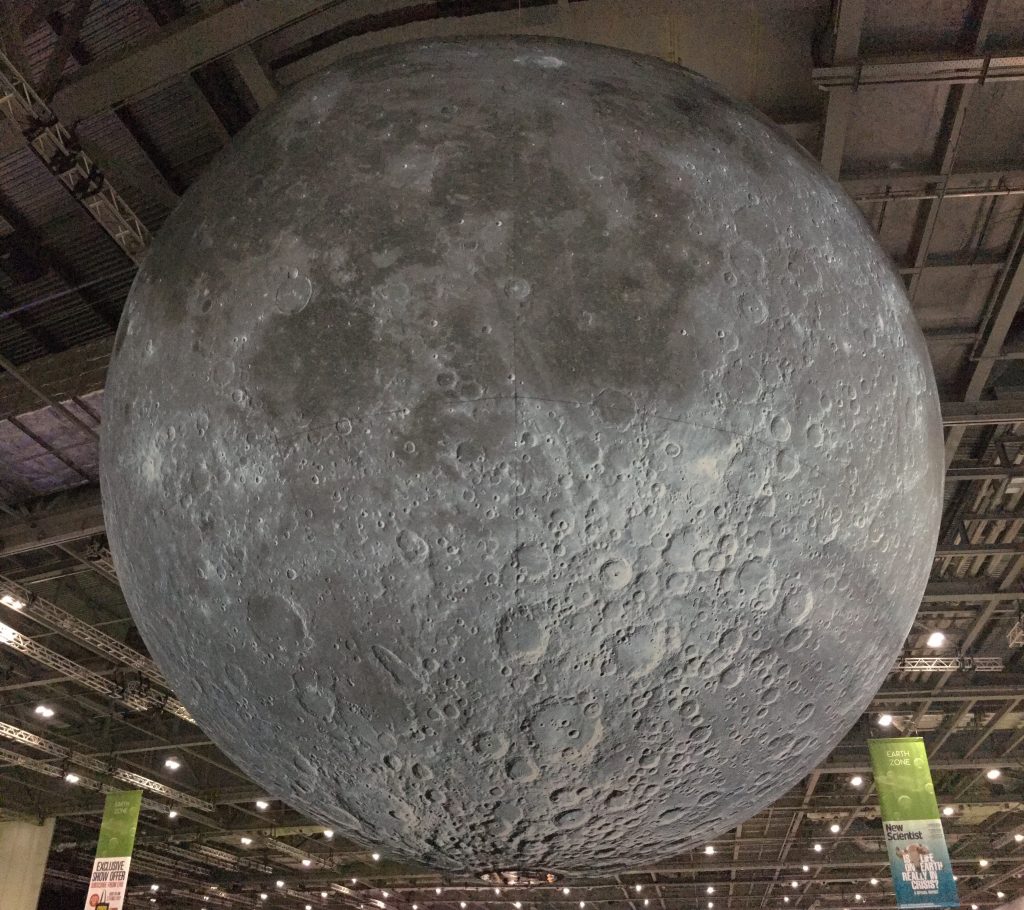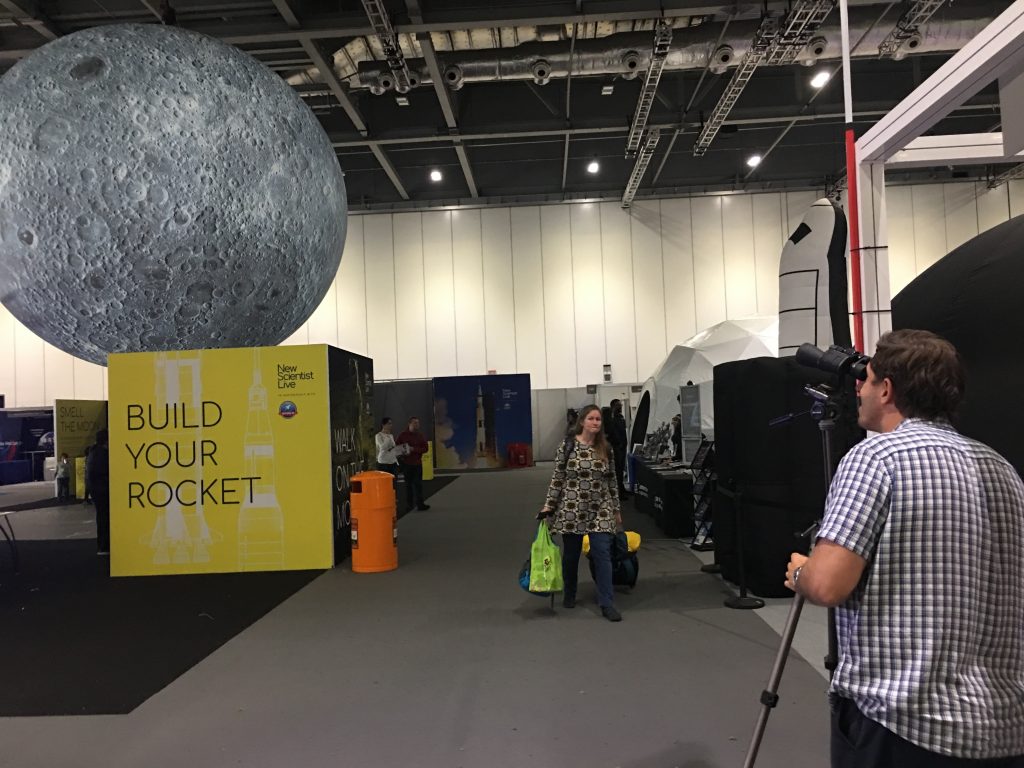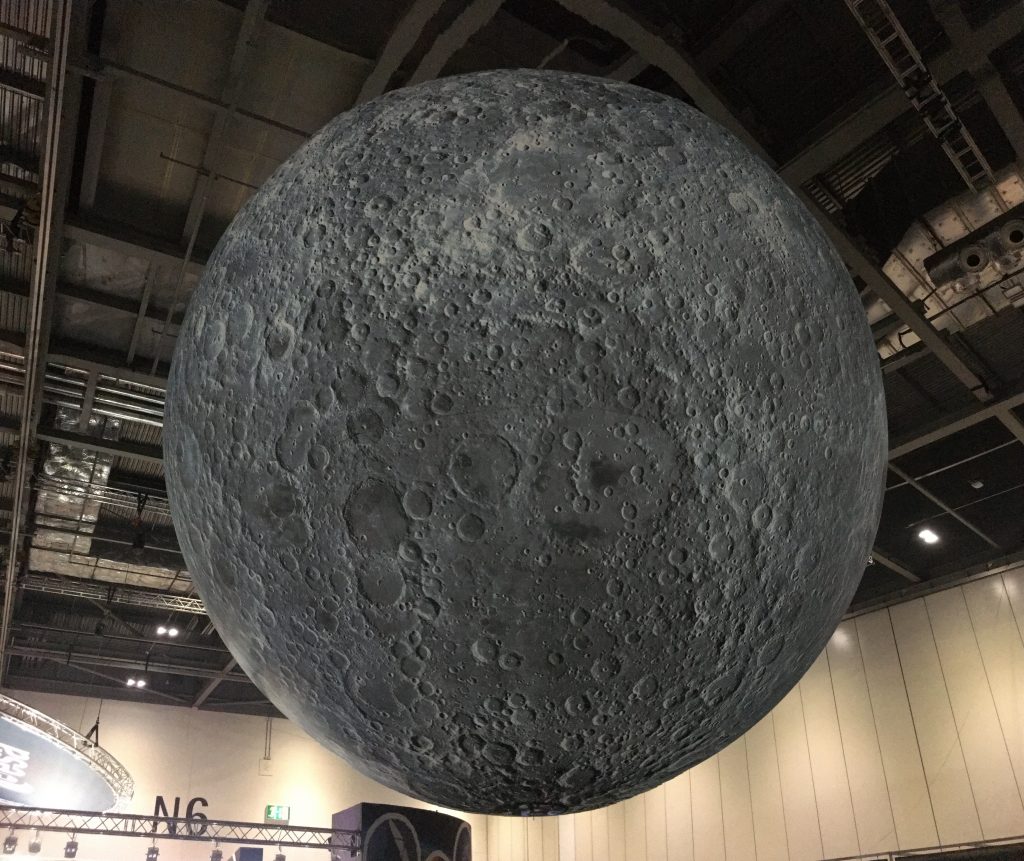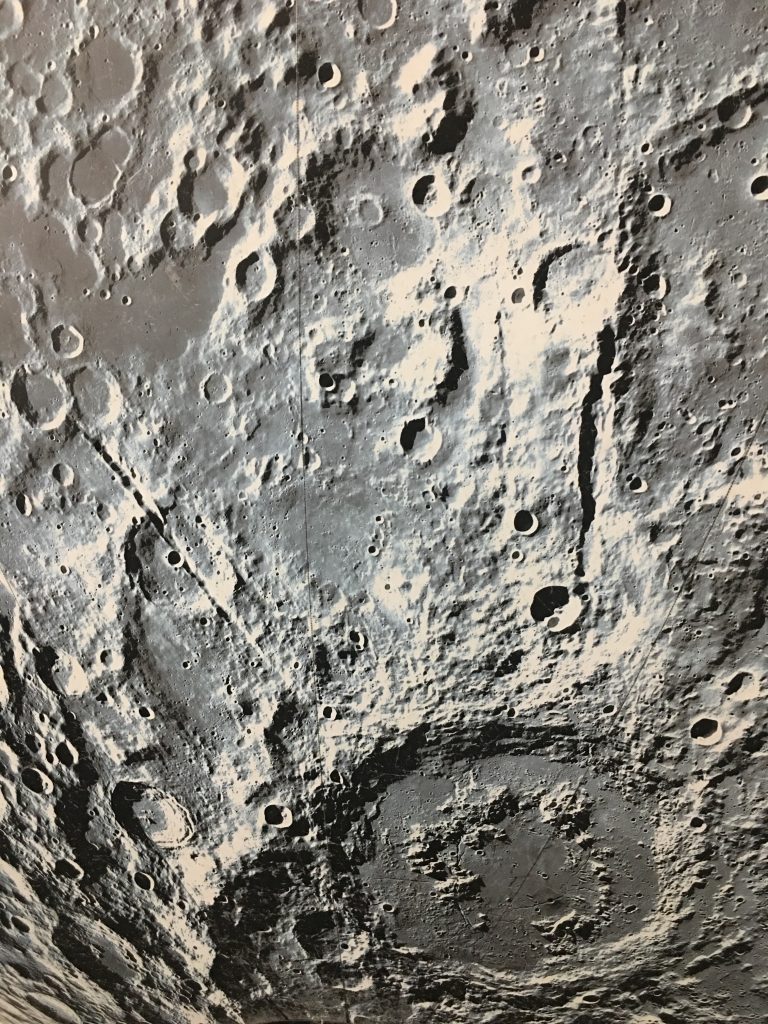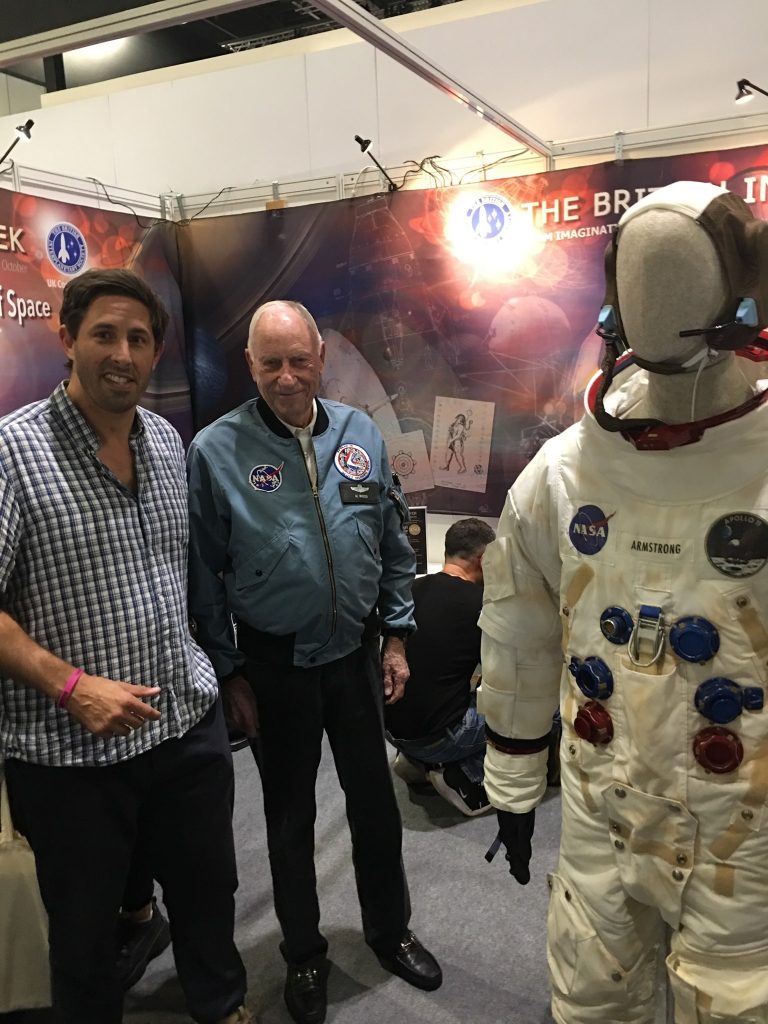The moon’s captured rotation around the Earth prevents us from observing the rear-facing hemisphere. No matter how many times I have observed the moon, I can only ever see slightly more than 50% of the lunar surface. There are many fascinating features worthy of study that are simply out of sight, out of mind.
In October, I volunteered at the BAA stand at the New Scientist Live in London. By chance, we had an excellent view of a large lunar globe in the Space Zone that provided a wonderful opportunity to observe the hitherto hidden surface.
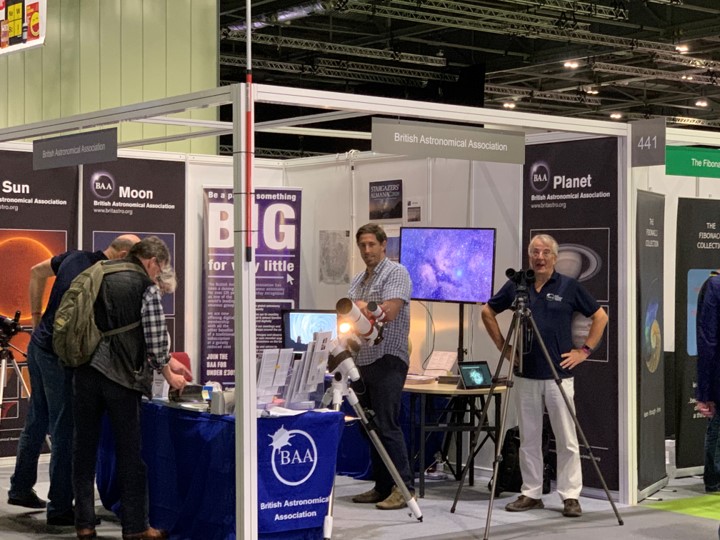
The moon globe has been on tour around the UK and is well worth a visit. I really enjoyed the astronaut’s view. Not only do you see the far side and southern pole, it is interesting to note the different perspective as you walk around the globe. The crater Clavius (in the centre of the image below), for example, appears like an elongated rugby ball through the eyepiece. On the globe it is, of course, a circular crater as, with a few exceptions caused by oblique impacts, the vast majority of craters are.
As I had traveled by train, I only brought my tripod mounted binoculars (rather than a heavy telescope and mount) to demonstrate that one can enjoy practical astronomy without the expense of an astronomical telescope. As most visitors had smartphones, they were taking pictures of the lunar surface through the binoculars. We highlighted that this is their imaging session.
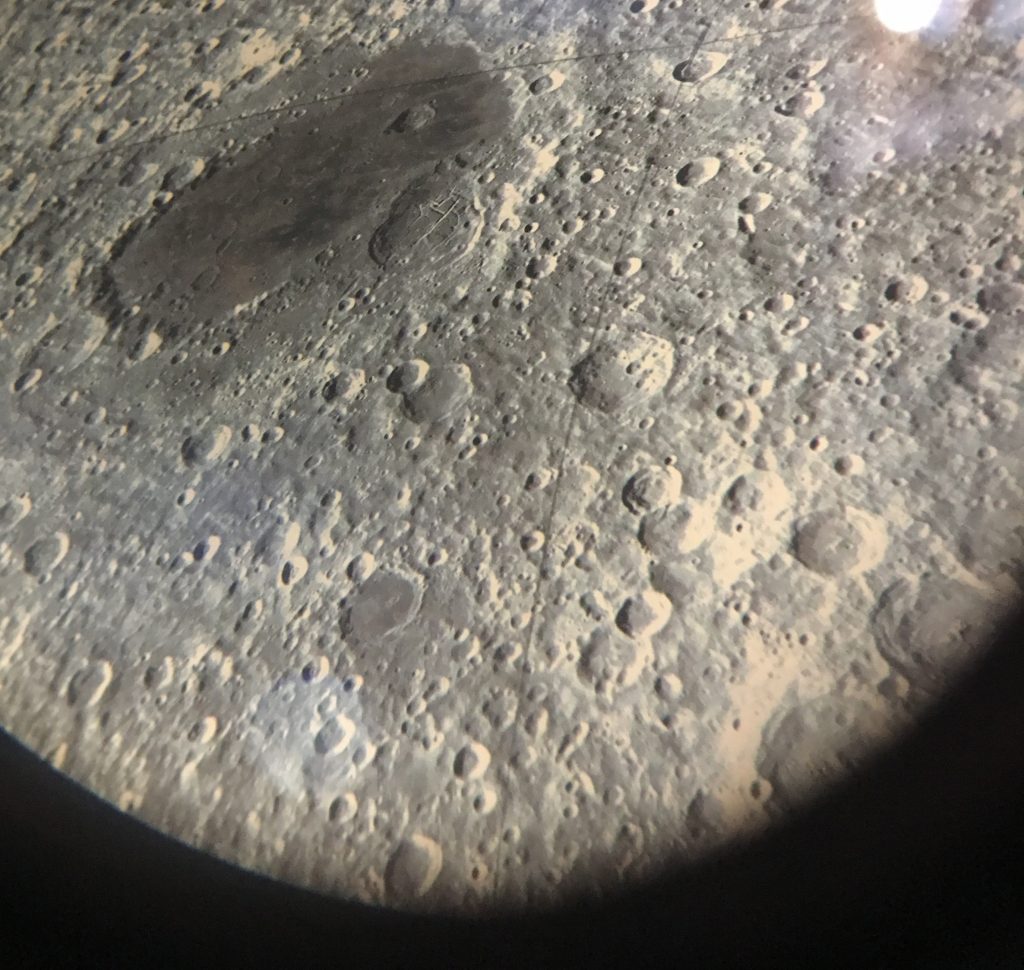
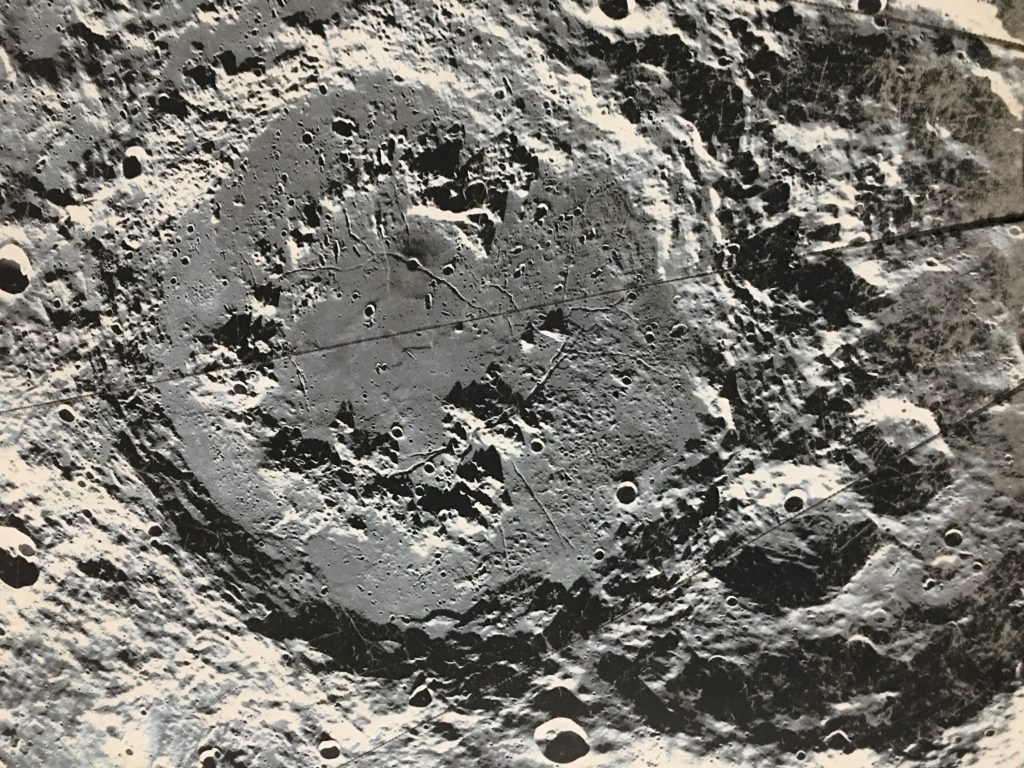
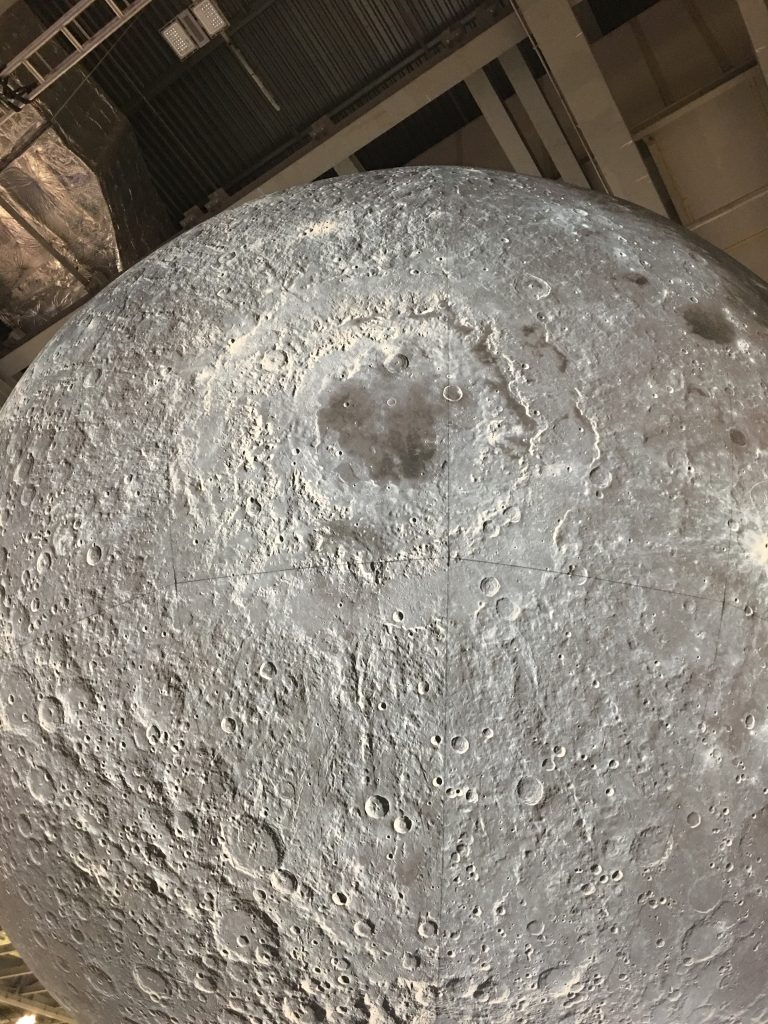
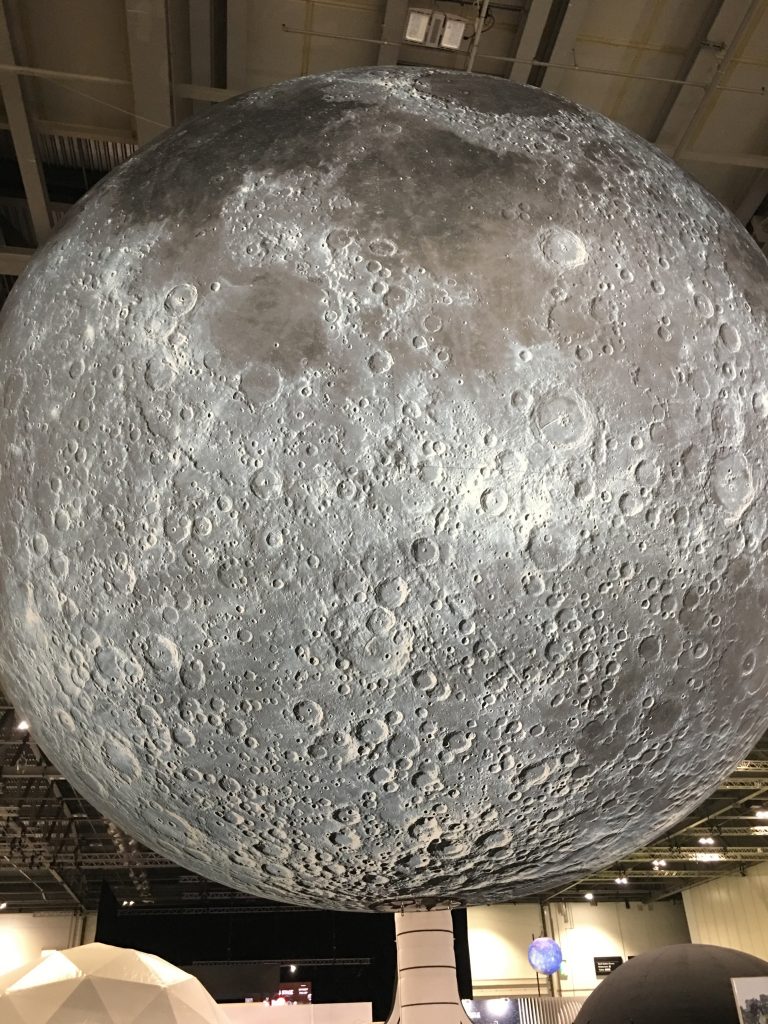
Not only did we observe the moon, I got to meet someone who had seen the lunar far side first-hand: Al Worden of Apollo 15. I bought a signed photograph of him taken during his mission to the moon. This will go alongside my image of the Apollo 15 landing site – in my opinion this is the most exciting landing site with the Apennine mountains and Hadley Rille – and a 3D printed surface I made showing the surface topography.
I also met an artist who was selling ceramic models. She showed me her globes of Mars, the Moon and Apollo landing sites as well as earth-based geography. Amazing stuff with prices to match. Very inspirational as I make my own 3D models for display.
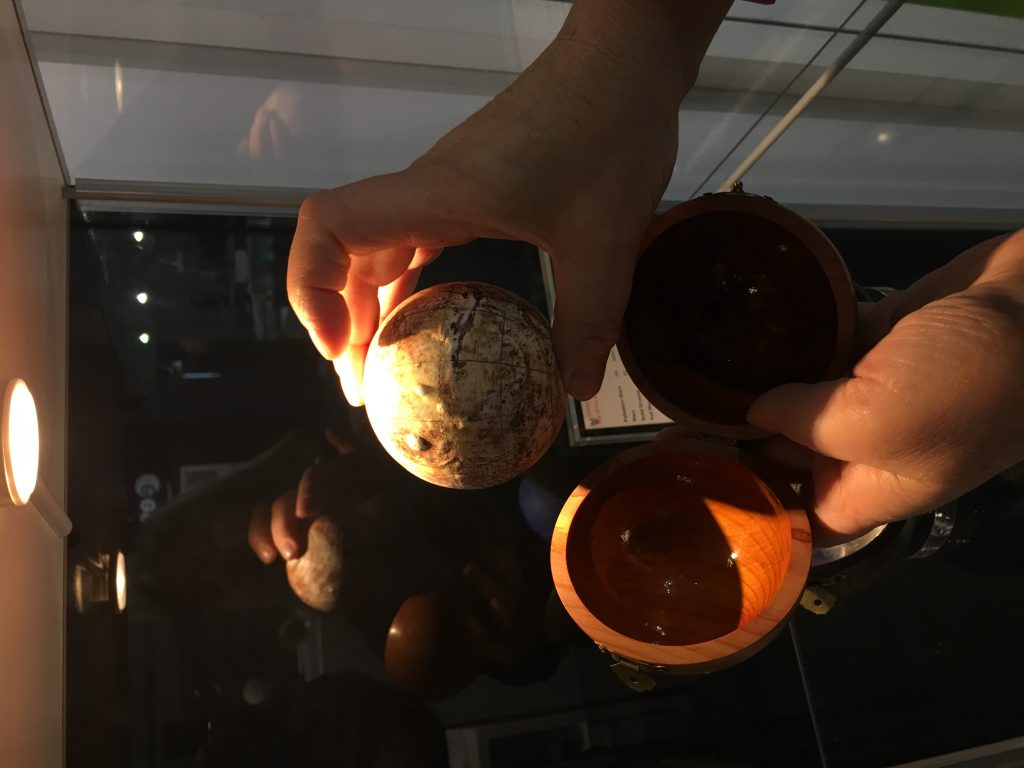
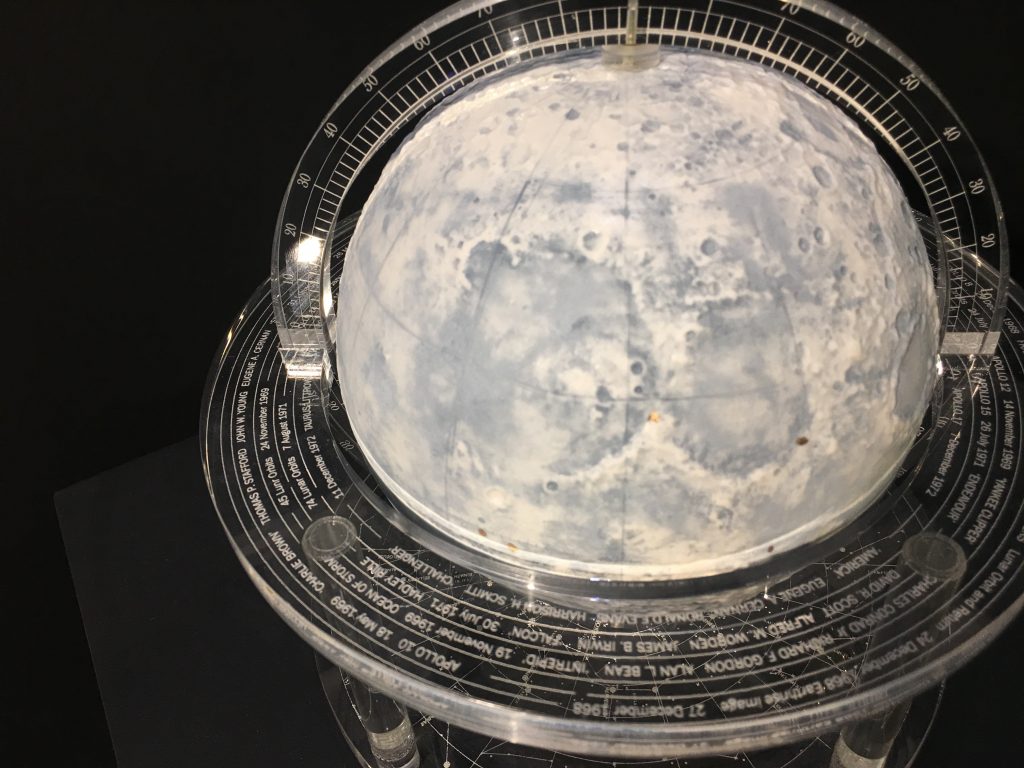
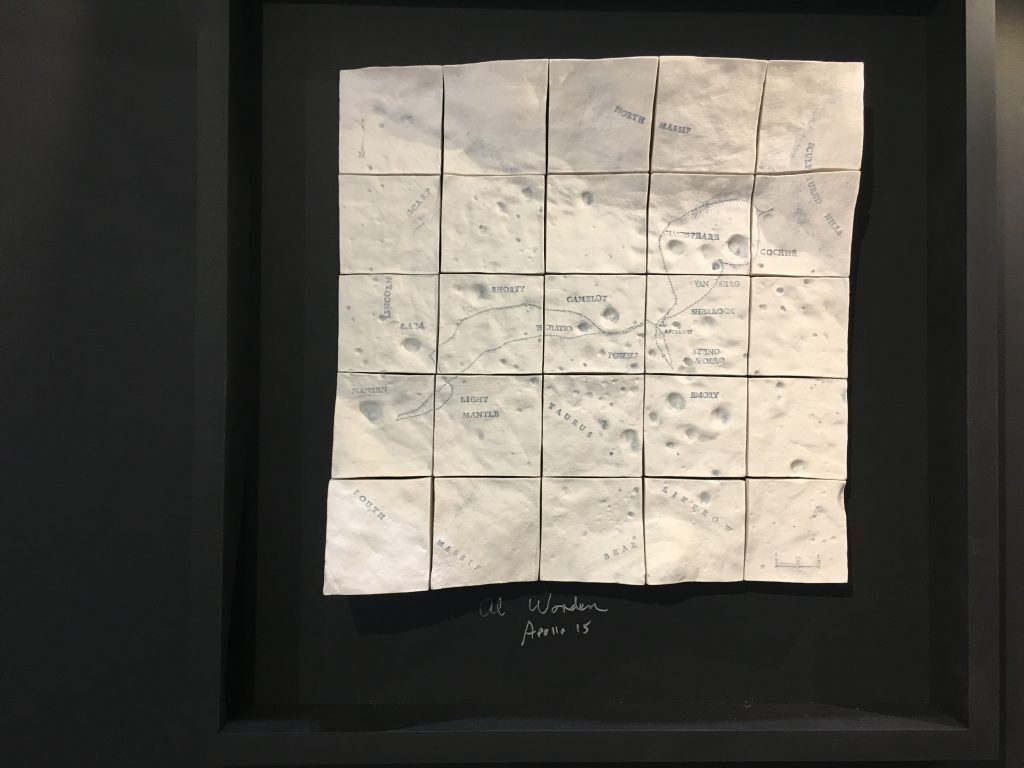
It was a great fun, albeit tiring day having caught the 0600 train to arrive in London for 0900 before returning home at 2200 having been on my feet for most of the day. That being said, I observed the far side of the moon, showed countless people the views through the binoculars, met an Apollo astronaut and chatted to inspirational attendees at other stands. I have already put my name down to help out next year.
